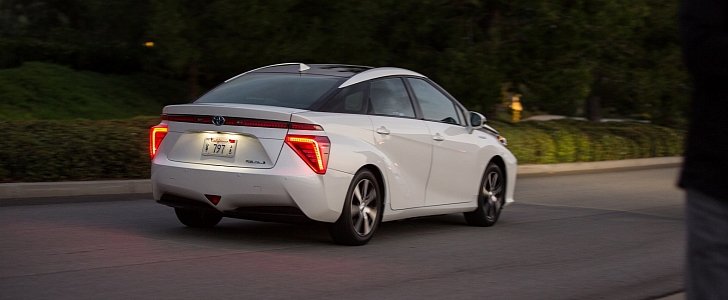Sir William Grove knew a lot of stuff about electrolysis, so he hypothesized that by reversing the procedure (which split water into hydrogen and oxygen by sending electricity through it) he might create electricity. He only reached the experiment stage, but managed to prove his ideas, which made scientists Ludwig Mond and his assistant Charles Langer further improve the technology, to which they also gave the “fuel cell” name all the way back in 1889.
Fuel Cell Technology and Its Use in Cars

Of course, you have probably heard the term “fuel cell” more than once and on various media channels in recent years, most likely with something “automotive” connected to it. For example, former US president George Bush announced a program called “The Hydrogen Fuel Initiative” during his State of the Union Address, eleven years ago.
The program aimed to develop the hydrogen, fuel cells and infrastructure technologies necessary in order to make fuel-cell vehicles practical and cost-friendly enough by the year 2020, more than one billion US dollars being dedicated to it so far.
As you can probably guess, the program is not exactly on track nowadays, since quite a number of things happened between Bush's promise and now, including the economic meltdown from 2008 and GM's bankruptcy.
On the other hand, carmakers like Honda, Toyota, Mercedes-Benz and even Hyundai kept working on reliable fuel cell technology. In fact, Toyota and Honda are already mass-producing fuel cell cars, while the others are right behind them.How does it work?
In essence, a fuel cell is an engine with no moving parts, but the technical definition is that the fuel cell is an electrochemical energy conversion device. It converts hydrogen and oxygen particles into water, therefore also producing electricity. There are many types of fuel cells in use or being researched these days, but most of them use hydrogen and oxygen as the basic chemicals required for the conversion.
A similar procedure takes place in an ordinary battery, only that the battery has all the chemicals required for the conversion stored “on board,” while the fuel cell can be “recharged” from an outside source so that electricity can keep being “manufactured.” Besides pure water vapors and electricity, another by-product of this procedure is heat, more or less depending on the type of fuel cell.Automobile application
From all the different types of fuel cell, the Polymer Exchange Membrane Fuel Cell (PEMFC) is apparently the best candidate for vehicle applications. The main reasons are its high power density and relatively low operating temperature, meaning that it doesn't take very long for the fuel cell to warm up and begin generating electricity. It also uses one of the simplest reactions in any fuel cell type.
The first vehicle use of this technology was made in 1994, when Mercedes-Benz unveiled the MB100-based NECAR1 (New Electric CAR 1) prototype. Apart from the low power output (only 50 kilowatts), the biggest downside of the concept was the fact that the fuel cell drive was occupying the whole cargo area of the van.
Also, from a passive safety point of view, it would have been a horrible idea to mass-produce, taking into account it transported a massive tank filled with highly flammable pressurized hydrogen on board.
During the next decade, technology evolved and one of Mercedes' latest fuel cell concepts had a power output of 115 hp (85 kilowatts) and could run for around 250 miles (400 kilometers) before refueling. Of course, the Germans aren't the only ones taking a peek at fuel cell technology, another major automotive player being Honda, who has already leased the FCX Clarity model for fleet testing to select customers since 2008.
Toyota went even further with the Mirai, whose fuel cell system is apparently enough to give it an EPA range of up to 312 miles (520 km) on a single tank of hydrogen, which can be refueled in less than five minutes, just like a regular car. Surprisingly even for a vehicle out of the ordinary, the Toyota Mirai gets an EPA-estimated 67 mpge no matter if the driving is taking place in the city, on the highway or combined.
The second generation of the Honda FCX Clarity is just now going on sale, using a fuel cell stack that is 33 percent more compact than the first model and with a 60 percent increase in power density. Honda says that the fuel cell and integrated powertrain in the latest Clarity Fuel Cell is comparable in size to a V6 engine, which leaves enough interior space for five passengers and their luggage.
Only select customers in California will be able to experience the model, whose anticipated EPA driving range should be at least 300 miles (500 km) and its starting price should stand at around $60,0000.
Considering the inherent limitations for this technology in automobile applications, with the lack of a refueling infrastructure being the greatest, fuel cells are unlikely to rival more conventional cars in the next 15-20 years, but on the long run, they might prove to be more than a viable transportation solution. The pollution taxes and environmental laws are becoming more and more stringent, and along with the continuous rise in the consumption of fossil fuels, this might convince other governments and car manufacturers to pump money into the fuel cell technology.








